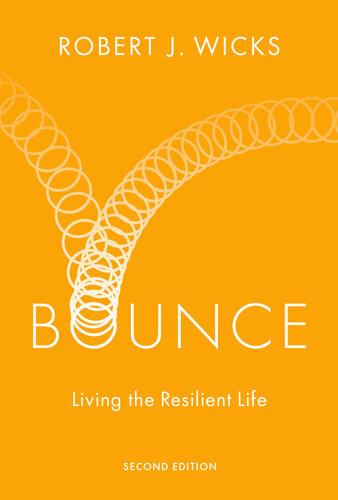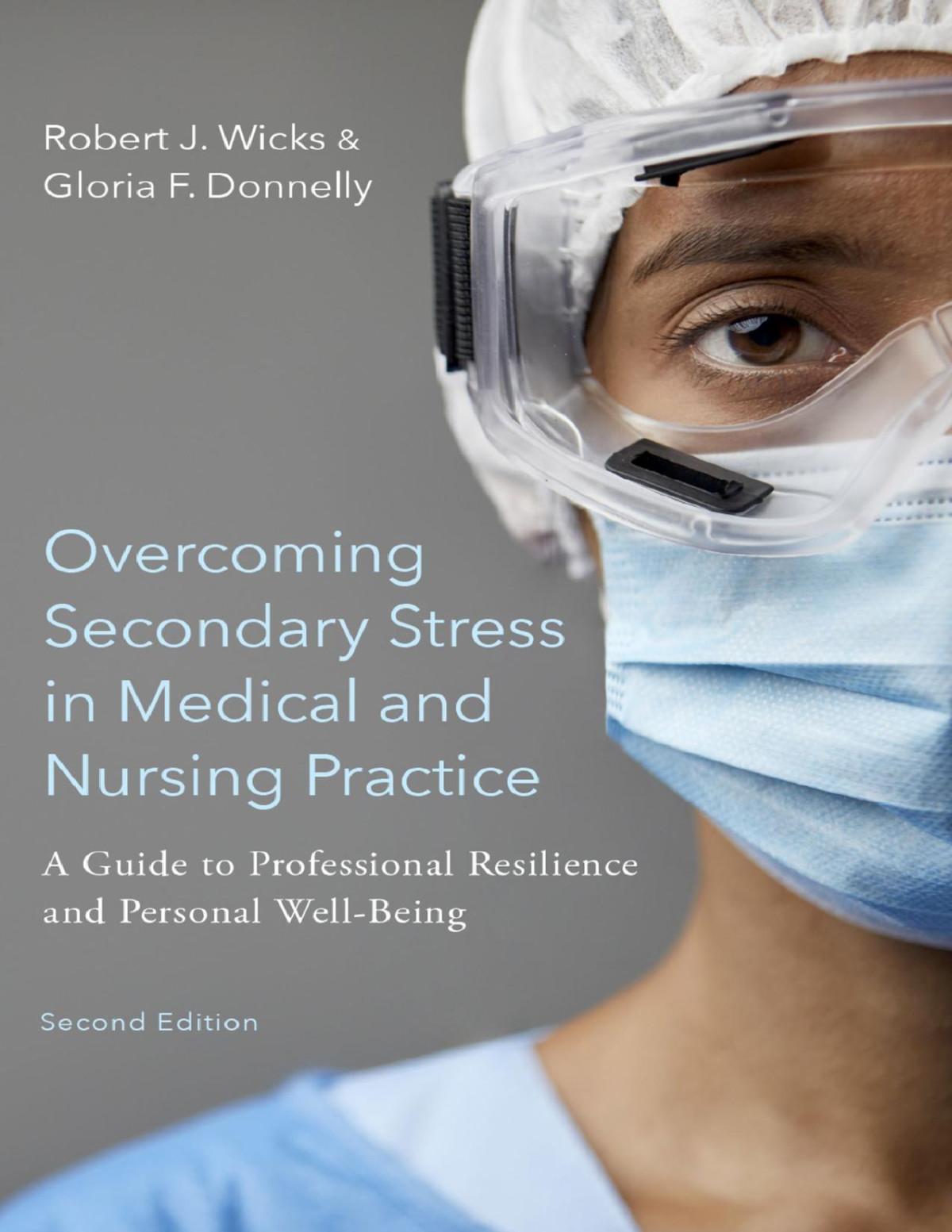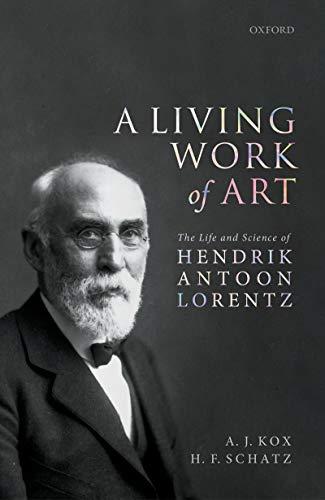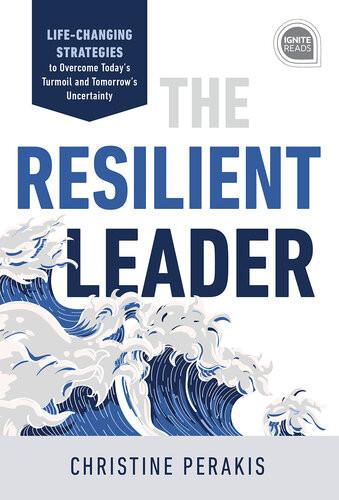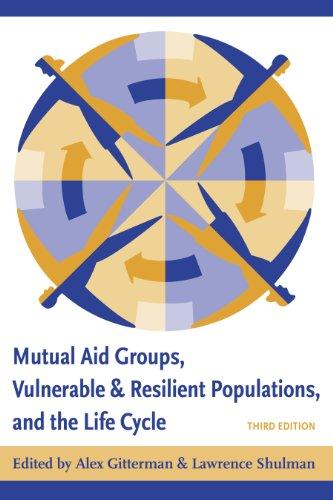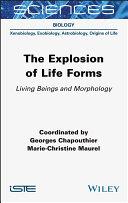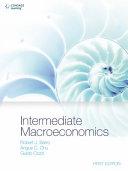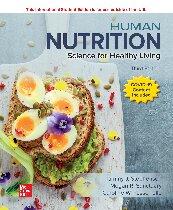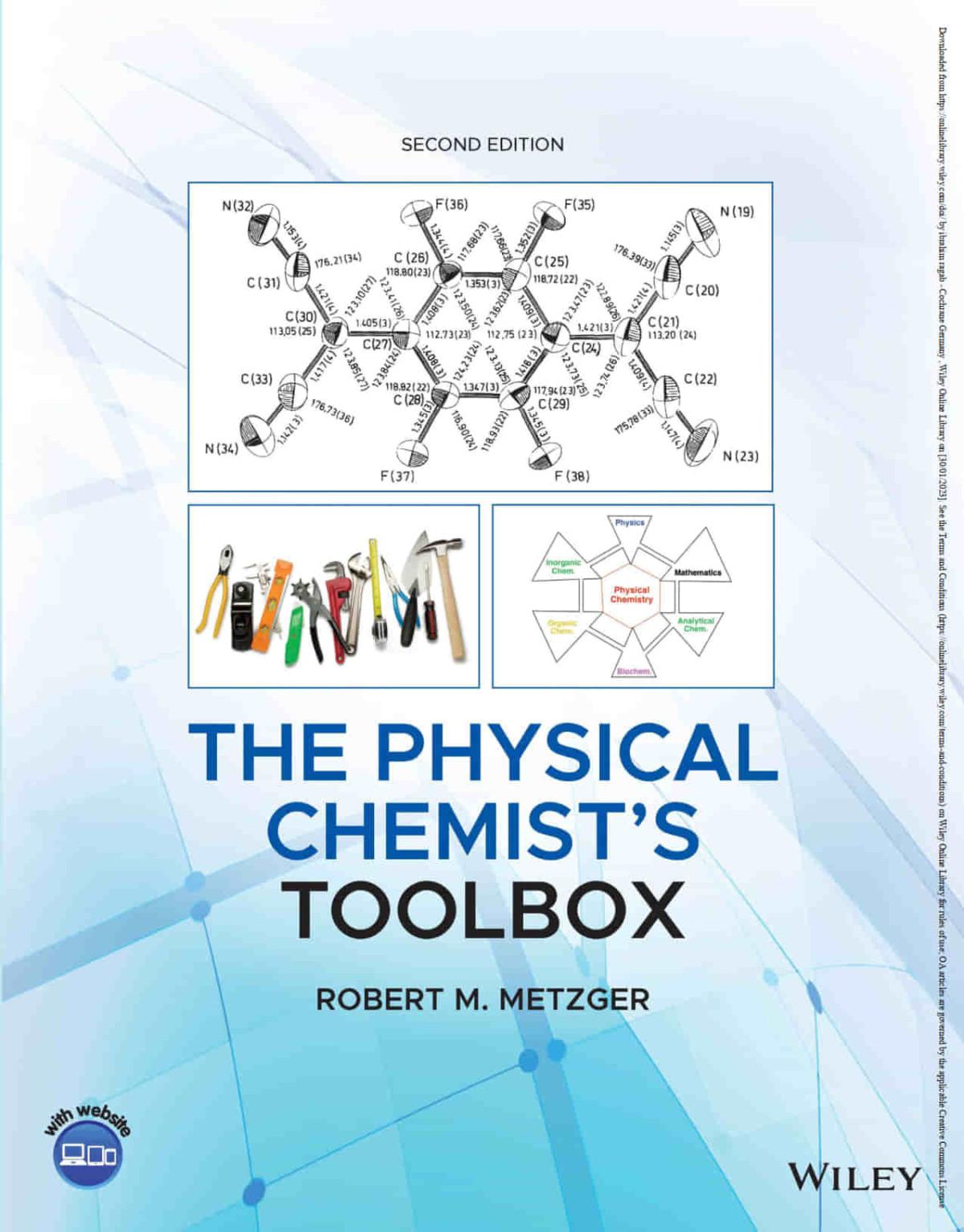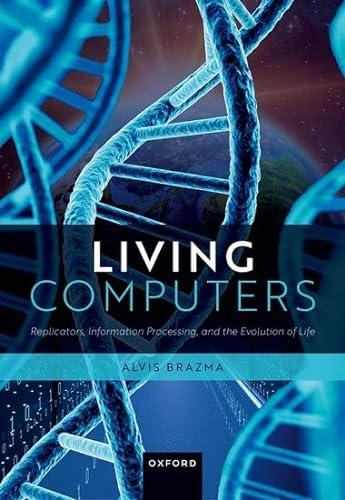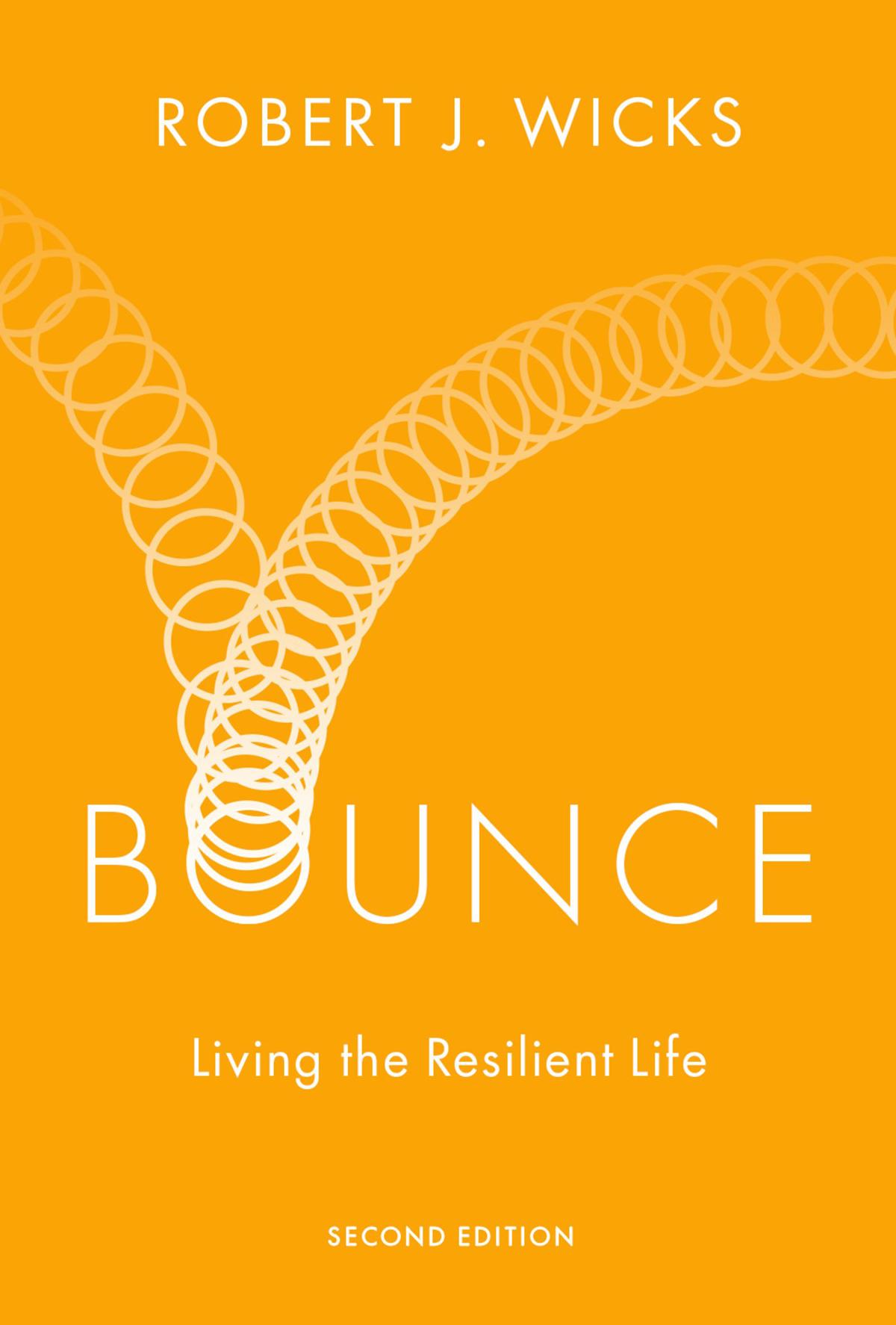Have a Life!
An Introduction
Live all you can; it’s a mistake not to. It doesn’t so much matter what you do in particular, so long as you have your life. If you haven’t had that, what haveyou had?
HENRY JAMES, The Ambassadors
Periods of stress frequently represent unique opportunities to develop or strengthen those resilientqualities thatare notour strongestsuits.
FREDERIC FLACH, Resilience
Resilience is an evergreen topic of interest. People are naturally drawn to information on how to improve self-care, develop a rich circle of friends, gain and maintain a healthy perspective, and become more attuned to ways of uncovering and productively spending periods of time alone. Such opportunities help improve self-awareness and understanding. They help improve our emotional intellect so we don’t immediately react but instead pause to reflect and process life as it unfolds. Self-care, friendship, a healthy perspective, and reflective periods also aid us to balance independence and collaboration, as well as know how much psychological safety is needed, so we can risk without being rash. The original edition of Bounce addressed these areas, and much of what was contained in the book is still current and applicable. But then the appearance of Covid-19, increased gun violence, intense political strife and dramatic divisiveness within countries, families, communities, and even within faith traditions occurred. The need to greet and successfully adjust to unexpected and broad-reaching change, personally threatening challenges, and serious community
stress became of even greater import. In addition, styles of living which were taken for granted—that is, adults go out to work and children are educated in an actual classroom—were also radically impacted. As a result, not only were adults asked to adapt to deal with such stress and change but also to deal with the questions and needs raised in the young around the world about their own security and hoped-for normalcy.
After I returned from Beirut, where I spoke with caregivers living and working in Aleppo, Syria, I saw a note from one of the leaders who oversee their work. He wrote that a young girl, who was also an active volunteer helping others in need, asked him:
Why am I losing the best years of my life? Why am I not like the rest of the girls in the world? Why do I not have the right to live fully my youth? Is this God’s will? Why does He not answer our prayers and our pleas? In spite of our trust in Him, we do not see the end of the tunnel . . .
The leader then added:
What answer can I give her and to many other young persons? I listen to them, I support them, I try to seek to stutter words of trust and of faith. This is not always easy.
And so, additional lessons learned from those who effectively mined the often unexpected demands of this difficult period, which remains ongoing in a number of ways, need to be brought forth and added to what we already know. Given this, in this second edition, as well as the updating and expansion of each of the original chapters where needed, a new chapter on what can be drawn from the topic of posttraumatic growth (PTG) is now included. People need to see the possibility of not only bouncing back from stress (resilience) but also to fathom how they might even actually benefit from the very stress or trauma experienced in ways that would not have been possible had the stress or trauma of this age not have happenedinthefirstplace.
We presently remain in a “psychological and spiritual winter solstice.” We have been in the dark, still remain in the dark because
of unforeseen circumstances, yet we see points of light that weren’t there before. For instance, in the case of Covid-19, it was a unique wake-up call to reexamine our values and sense of meaning-making, as well as our routines and habits.
A nurse dealing with the long-standing stress of interacting with Covid-19 patients and their families experienced a great deal of emotional distress. When asked how she handled it, she shared that she would cry all the way to work. Once in the hospital parking lot she would “get herself together” before going inside. Then, on the way home from work, she would cry again until she pulled into the driveway of her home. She would once again regain her composure so she wouldn’t inflict her sense of upset on those in her family.
The reality of Covid-19 and the other profound world problems that are thrown at us in the daily news reports are chronic, so they don’t disappear in weeks, months, or possibly even years. Consequently, they impact everyone to some degree, both at work and in one’s personal life.
Accordingly, the dawning of Covid-19 in contemporary life encouraged people to take more seriously factors that they normally might take for granted or view lightly. People began to recognize more clearly that Because you can carry theburdensyou thinkyou should, doesn’t meant that they are not heavy. And so, with this in mind, in the second edition of Bounce: Living theResilient Life, the following material is now included, emphasized, and/or covered in greater detail. It involves the following:
Appreciating the concept of “anomie” and how it clearly describes what many are going through today following the onset of Covid-19 and its presence as an endemic
Uncovering what the principles of PTG can teach all of us not simply those who have experienced the trauma of physical or sexual abuse or events on the battlefield
Learning to take more seriously the need for time alone and how to best utilize reflective periods
Understanding ways to avoid unnecessary emotional burnout when we reach out and stand with others under great stress
Improving emotional intelligence (EI) where we look at our dysfunctional thinking, see how it might impact our emotions and actions, and reflect on how we can control, handle, and express our feelings in more appropriate ways in the interactions we have with others especially when they are under great stress
Increasing sensitivity to the dangers of “psychological and spiritual contagion” in which we begin to mimic the negative attitudes and actions of others experiencing personal darkness
Understanding and using the acronym ABLE as a quick guide when experiencing confusing stressful feelings
Appreciating that change is constant so we can consequently attend to monitoring the habits and routines we have as a source of support when feeling overwhelmed Honoring the reality of failure as part and parcel of healthy, assertive involvement in life and guiding others in our interpersonal network
Appreciating the importance of “unlearning” so, when necessary, we can let go of what may have been logical and helpful in the past but needs to now be replaced with new knowledge and approaches
Needing to be aware not only of individual sources of burnout due to our personality and background but also attending to toxicity within the systems or groups to whichwe belong
Expanding Appendices A and B, which are designed to help the reader make the most out of what they have read in Bounce
Including new stories and illustrations used by the author in his recent work worldwide with professional helpers and healers (physicians and nurses, mental health professionals, persons in ministry, educators, relief workers, and members of the military) since the information in them is applicable for everyone
Having such an increased awareness of how we might face and adjust to new challenges is not only designed for personal benefit but also to further support resilience in the family, community, and workplace. This is so because one of the greatest gifts we can share with others is a sense of our own inner strength, peace, and a healthy perspective . . . butwecan’tsharewhatwedon’thave!
Also, such personal psychological health is crucial because it affects the children who depend on us. Healthy adults need to model for children principles that make them feel more confident and interested in growth when challenges arise. And so, when adults are resilient, they are more psychologically present for their children; able to physically involve them in interactions, rather than have them simply become digitally distracted; provide behavioral rudders and structure so children can feel they know what is expected; recognize the importance of boundaries offered so children can feel secure; and—when possible—encourage the young to enjoy exercise outdoors, which is one of the key aspects of a self-care protocol for both adults and children.
The goals for Bounce’s second edition, then, are no less than for the original one. However, it is also designed to take these goals yet another step as a way to encourage setting the stage for even more opportunities for new personal depth, creative meaning-making, and, quite simply, to have a life—and have it more abundantly.
HAVE A LIFE!
Physician and author Walker Percy in one of his novels poses the question: “What if you missed your life like a person misses a plane?” Unfortunately, in today’s stressful world with multitasking being the norm of the day, this is so easy to do—especially for those who fail to pay attention to their inner life and their capacity to grow with experience. Each of us has a range of resilience (the ability to meet, learn from, and not be crushed by the challenges and stresses of life). This range is formed by heredity, early life experiences, current knowledge, and the level of motivation to meet life’s challenges and enjoy each day to the fullest—no matter what happens! However, of even more import than the different resiliency ranges people have is their conscious decision to maximize the ways in which they can become as hardy as possible. They may not call this resilience, but it is their ability to be open to life’s experiences, and so to learn. Those who take the opportunity to enjoy more of
life and embrace the challenges thrown their way make the most use of natural pressures and stress, which, oddly enough, may result in a richer, more meaningful life theoretically than if no stress were present at all.
“Having a life” is more than the absence of negative occurrences or pressures. The sources of all stress cannot—and probably should not—be prevented. Yet they can be limited, and, more importantly, as those who study resilience report, the way stress impacts us does not have to be totally negative.
Psychologist Edith Grotberg in her book Resilience for Today defines resilience as “the human capacity to deal with, overcome, learn from, or even be transformed by the inevitable adversities of life.”1 What is interesting about this definition is that it points to the unique impact of resilience: If we become the most resilient person we can be, new positive realities and perspectives arise and flourish in the most surprising ways. Amid life’s stress and suffering, maybe even because of it, when we have the tools to enhance resilience and can strengthen the sense of meaning in our lives, we better appreciate both the welcome and unwelcome aspects of stress.
Each of us has an opportunity to become deeper and more compassionate in response to the stressors in our lives if we are aware of some basic practices to contain and understand stress, are mindful, reasonably self-aware, and learn how to maintain a healthy sense of resilience and perspective. In observing and working with physicians, nurses, psychotherapists, educators, relief workers, members of the military or police force, persons in full-time ministry, and other professional helpers and healers who have demonstrated resilience, I have found that how they experience even the most difficult encounters in life is quite telling. Thus included in this book are approaches to self-awareness, self-care, and compassion that apply themes from positive psychology, self-debriefing, and mindfulness, to create a personal resiliency profile that can expand your ability to meet life’s challenges in ways similar to those used by healing and helping professionals. This is essential, for as the existentialist writer Albert Camus recognized: “When a person has
learned— not merely on paper—how to remain alone with his sufferings, how to overcome his longing to flee, then he has little left to learn.”2
A physician who was working in Somalia during a devastating famine is a good example of this. During the height of the starvation, he was approached by an interviewer from public radio in the United States with the following question: “Doctor, how can you stand all of this carnage? The old people are dropping like flies. And the children are dying in such numbers that you are stacking them up in the corner like firewood rather than burying them immediately. How can you stand it?” (You could hear the pain in his voice.) The physician stopped, turned to the interviewer, and said: “When you watch this horror on television in the United States, you are overwhelmed by it, aren’t you?” When the reporter nodded, the physician went on. “Well, we in-country feel the same—if not more pain—than all of you, but there is one difference.” To this, the interviewer (who himself had obviously been in many disaster situations and was quite affected by all of the human tragedy before him) asked in an incredulous voice: “Whatdifference?” To which the physician softly responded: “You can’t lose hope as long as you are making friends.” This may seem like an odd response. Who has time to make friends when people are dying all around you? But this reveals, too, how personal our responses are to life’s stresses. This doctor’s response is amazingly hopeful under the circumstances. This type of attitude or inner space marked by a sense of resilience, a healthy perspective, and a sense of purpose is not only wonderful for the persons who have it but also a gift to those who cross their path. Visvas is a Sanskrit word that literally translated means “to have trust, to breathe freely, to be without fear.” Being able to offer our friends, coworkers, and family the “inner psychological space” of visvas can make all the difference both in our own lives and in our personal interactions. Whether we refer to this space as our perspective, attitude, outlook, or the possibly more inclusive term “inner life,” it is unique and may often even be
countercultural in a society that seems so unnecessarily driven and obsessed by the wrong things.
The “inner or interior life” is what some people point to as a place where nonjudgmental self-awareness, simplicity, freedom, and truth flourish. It is also the psychological or spiritual “place” in which deeply felt healthy needs are experienced and addressed. These include the following:
A need for permanence in a civilization of transience
A need for silence in the midst of noise
A need for gratitude in the face of unbelievable greed
A need for poverty amid the flaunting of wealth
A need for contemplation [or mindfulness meditation] in a century of action, for without contemplation, action risks becoming mere agitation
A need for communication in a universe content with entertainment and sensationalism
A need for peace amid today’s universal outbursts of violence
A need for quality to counterbalance the increasingly prevalent response to quantity
A need for humility to counteract the arrogance of power and science
A need for human warmth when everything is being rationalized or computerized
A need to belong to a small group rather than to be part of the crowd
A need for slowness to compensate for the present eagerness for speed
A need for truth when the real meaning of words is distorted in political speeches and sometimes even in religious discourse
A need for transparency when everything else seems opaque
Yes, a need for the interior life.3
It is our interior life that includes those psychological factors, belief systems or attitudes, and spiritual or philosophical outlook that provide us with the sources of resilience, a sense of meaning, and appropriate transparency in our dealings with others. Different psychological approaches, nontheistic philosophies of living (e.g., Buddhism), and world religions all emphasize the need to enhance this sense within us. As we look across the board at these philosophies/psychologies/spiritualities of living, no matter what the approach, they share a number of common themes. They include the following:
Recognizing the dangers of psychologically toxic life situations and unhelpful attitudes
Directly or indirectly appreciating lessons from the literature on PTG or the “spirituality of suffering” in ways that optimize not simply bouncing back from stress but also potentially deepening because of the very unavoidable trauma and challenges we face
Valuing the need for self-care as an integral part of self-respect
Having a close, balanced circle of friends
Knowing the key concepts of resilience that are emphasized by experts in the field
Appreciating the value of being able to reach out compassionately without being pulleddown
Being able to debrief at day’s end in order to limit stress and improve selfknowledge
Having the honesty and true humility to see more clearly our personal gifts as clearly as our psychological “rough edges”
Discovering and availing ourselves of the rich resources of silence, solitude, and mindfulness
Learning how to develop and reflect upon our own personally developed resilience profile
The approaches in this book represent more than a series of techniques (as important as these may be) for persons who believe that seeking more balance and depth is essential. Instead, these approaches are part of the dramatic process of truly embracing a richer self-knowledge and more honest self-appreciation. The goal is to live in a compassionate way of giving of ourselves to others, rooted in personal resilience and an ethos that values what is truly good.
And so, becoming more resilient, savoring our brief life, and in turn being able to reach out to others requires a serious commitment to go deeper into our own sense of self than even we thought possible. I experienced this personally a number of years ago during one of my regular visits to a personal mentor.
The sessions I had with my mentor were designed to help me keep perspective. At the time (as I am now), I was providing help to other healing and helping professionals who were facing their own challenges, darkness, stress, and transitions. As one might expect, helping them to face their own secondarystress (the pressures that result in reaching out to others, including anxiety, despair, and
darkness) was psychologically dangerous for me as well. My mentor knew this and called on me not to retreat but to begin a journey to understand more deeply my own inner life. I can vividly recall one particular encounter.
We were walking through the Virginia countryside on a crisp, sunny winter day. About halfway through our usual route along the Shenandoah River, he surprised me with the comment: “I think now may be a good time for you to take your inner life more seriously.”
Although the statement seemed quite accurate to me at the time, later I wondered why I had not reacted more defensively to it. After all, for almost two years I had been driving an hour and a half each way, every six weeks or so, to see him. I really felt I had been investing good time and energy in being open to the more deeply hidden elements of my inner life that could explain why I did the things I did and reacted as I did. So my natural response could well have been: “Well, what do you think I have been doing?”
Instead, the ideal timing and accuracy of his comment, and the trust I had in him and in our relationship, made me see his words much differently. What I instantly felt he was trying to tell me was that it was time to leap more freely and deeply into what was truly important in life.
I think he meant that I needed to be even more radically engaged in a movement toward understanding what made me tick. To accomplish this, I knew I would need to ask myself such questions as: What drove my work as a caregiver for other caregivers, and what provided a theme and purpose for my personal life? How could I continue to care for others in a professional yet deeply compassionate manner? How might I truly nurture my own interior life through creative, new, disciplined, and simple ways, to embrace a sense of resilienceand mindfulness?And how could I experience a life of greater joy and deeper peace?
Upon further reflection, I recognized that to accomplish this, I would need to become even more aware of the very things I had encouraged in others. In other words, I would need to be honest enough to appreciate that when we are notmindful:
We get upset over too many things.
We look at changes in our lives/our schedules as merely disruptive.
We let quiet compulsions, rhythms, and resistances rule out more and more of living, sapping it of freshness.
We increasingly use the unproductive “once this happens” approach to coping with stress (e.g., “Once my children graduate college . . .”).
We increasingly yearn for, and daydream about, having greater simplicity in our lives—without taking any actions to achieve it.
We accept a large disconnect between the healthy way we treat our family, friends, coworkers, and even acquaintances and the manner in which we treat ourselves.
We fail to allow ourselves to be vulnerable, and instead reject any negative feedback we get, rather than trying to really learn and merely becoming chagrined by the errors and personal psychological “growing edges” that require attention.
We spend a great deal of our time either in the silver casket of nostalgia or fantasizing about a future when we will be free to do “big things.”
We use our rare quiet moments to ruminate, be resentful, worry, become discouraged, or feel lost, bored, or confused instead of finding the renewal that comes from mindfulness practice.
We waste an inordinate amount of time on the trivial prestige, money, influence, fame, security, and pleasure while the essential simple joys of life are downplayed or elusive.
We replace passion and commitment with attention only to the mechanics of “doing good” simply out of duty.
We replace a deep respect for patience and pacing one’s journey with a need to hurry, achieve, and “finally arrive.”
We fail to see the moments in our day (waiting in line, a cancellation of an appointment, a brief illness . . .) as spontaneous opportunities for quiet reflection. We are unable to honor the rhythms of life and view transitions as annoying or frightening.
We view the ghosts of our past, when they intrude upon our peace and joy, not as teachers who carry valuable information for our growth, but as mere ghosts. We fall prey to attitudes of arrogance (projection), ignorance (self-condemnation), or discouragement (the need for immediate gratification) rather than being filled with a spirit of intrigue about our talents, growing edges, and resistances. We ignore or belittle our strengths rather than fully prizing them as a pathway to serve others in ways that provide deeper meaning to our lives.
We allow our interactions with others to become hackneyed, sprinkled with pat phrases, hollow comments, and worn stories.
We are no longer able to use our love of life to become positively infectious with those we love.
We have few activities in our lives that aren’t competitive, for gain, or designed to either add to our sense of security or serve to “medicate” our anxieties and
worries.
We have forgotten the major role of courage, the value of simplicity, and the need for transparency in how we lead our lives. We have sadly lost the desire to be truly sincere and respectful with ourselves.
But our life doesn’t have to be mindless. Being aware of these pitfalls, as well as when and where they are especially meaningful for us, can lead to a deeper and more resilient self. Yet, in order to access them, we first need self-awareness, which leads to strength and an ability to become more resilient—and that is what is at the heart of this brief work.
HOW TO USE THIS BOOK
The essence of this book is concerned with how we know and care for ourselves, so we can cultivate a psychological or spiritual “space” within ourselves that allows us to become resilient and engaged in life—whatever it throws our way. These are interrelated objectives— personal resilience through self-knowledge and self-care, on the one hand, and an ability to reach out to embrace experience from a place of inner strength, on the other. We explore various approaches to:
Identifying and reviewing the dangers of denial when we are feeling psychological distress
Gaining as much clarity about the stress or trauma we are facing, on the one hand, while remaining open to what it might teach us and how it might psychologically deepen us, on the other hand
Becoming more aware of the ongoing challenges of toxic situations/people, chronic and acute stress, and unhelpful negative attitudes
Improving the quality of our self-care protocol or personal renewal program
Ensuring we have an important balance of friends who challenge, support, tease, and inspire us
Knowing and internalizing key concepts of resilience
Seeing the value of compassion (sharing your resilience with others) and knowing how to reach out without being pulled down
Increasing the awareness of our gifts while becoming more intrigued with, rather than burdened by, our growing edges
Sensitizing ourselves to the important place of mindfulness, meditation, and alone time in our daily routine
Appreciating the joys, nobility, and privilege of being alive in such uncertain times
It is amazing how little it can take to shift the emotional tide in favor of continuously renewing ourselves and strengthening our inner life in today’s especially challenging, rapidly changing social climate. Even small alterations in behavior can sometimes jumpstart a healthier attitude so we can remain robust and free of undue, limiting, possibly previously unrecognized, personal agendas.
In my own life, shortly after graduating from Hahnemann Medical College and Hospital with my doctorate in psychology, as is common for a young new graduate, I dove into a sea of work. I was teaching full-time at the Graduate School of Social Work and Social Research of Bryn Mawr College, developing and maintaining a psychotherapy caseload of 15 to 20 patients a week, making hospital rounds on Sundays, consulting, doing clinical research, writing, and in the process of doing all of this, quickly becoming emotionally exhausted myself!
Despite all of this work, I decided to accept “just one more invitation” to speak to a group of educators, on of all topics, “burnout.” As I prepared for the talk, I thought, “What a charlatan I am. I’m so fatigued and I am going to address this topic? What a joke!” But an unusual thing happened when I started reading the
recent clinical papers and research findings published on burnout. Surprisingly, as I became absorbed by the research on the topic, rather than feeling drained, I slowly but surely began feeling more invigorated by what I read.
Now I could label the problem. I was better able to frame an approach to facing the toxic work stress I was experiencing, and I could improve the overall quality of my personal life as well. In addition, when I brought this awareness—and the increased energy I felt—to the informal self-debriefing I normally undertook at the end of each day (which was a carryover from my early clinical training), I was also able to reinvest myself again in the wonders of my profession. I could recall my original love for the challenges of clinical psychology rather than mindlessly and compulsively moving from task to task. And I found myself appreciating and seeking to enhance the major gifts and talents supervisors had pointed out in me instead of solely focusing on my shortcomings.
This epiphany that I experienced over 40 years ago has never totally left me. Instead, it has been reinforced by the new research and clinical approaches recently published on resilience, mindfulness, narrative therapy, contemporary positive psychology, and Zen therapy. These are the sources of the spirit with which I offer this brief book to you.
The following chapters are designed to spur the action necessary to address the question: How can I be more resilient, raise the quality of my life, and improve the presence I can offer others as a result of these actions? Not to expend the energy to address this question in today’s stressful and insecure world is, at the most basic level, impractical and unfair both to us and to those who need our healing presence in their lives.
RECOGNIZING AND DEALING WITH DENIAL
Given the delicate nature of our interactions with family, friends, and fellow workers, if we avoid employing the simple, powerful principles that allow us to increase resilience and limit stress, we risk
emotional and physical burnout. And yet, many of us still opt to do this at times. Two noted experts on the human psyche, Jeffrey Kottler and Richard Hazler, observe rationalizations that allow us to avoid facing our own challenges and increasing the strength of our inner life. All of us are familiar with these rationalizations:
“This period will pass and we will return to the ‘new normal’ again.”
“I have a lot of experience and know how to keep the stress that I am experiencing in my private life out of my work.”
“None of my colleagues or family has complained to me about my not being effective or dependable, so I am still really okay.”
“I am a person with great skills, so I can deal with this difficulty without any input from others.”
If there is an apt proverb for the articulated and unspoken demands people make of us in today’s often crazy world, it surely must be the Yiddish one: “Sleep faster . . . We need the pillows!” In addition to the unrealistic expectations we face, the stakes are now extremely high for those of us who want to live a rich and full life while still dealing effectively with stressful family and work situations. As a result, the potential for our developing such psychological problems as emotional blunting at one end of the spectrum or extreme emotionality on the other are quite great. Yet many of us still deny our own personal emotional needs—possibly as a misguided survival mechanism of some sort.
It is no surprise, then, that we can become so discouraged at times. This happens because we don’t even know there are practical approaches that not only deal with environmental and personal sources of stress but can also raise the quality of life at work and at home. Instead, unfortunately, we just march on because we believe we have no other realistic choice.
I encountered this attitude during a session with one very competent counselor who was starting to manifest early symptoms of chronic secondary stress—things like hypersensitivity, increased daily use of alcohol, and sleep disturbance. When I asked him how he would characterize his own problem, he said, “I may not be
burned out yet.” Then, after a brief pause, he smiled slightly and added, “But I think I’m experiencing at least a brownout!”
Acknowledging his insight into his precarious situation, I asked what type of personal renewal program (what professionals sometimes refer to as a “self-care protocol”) he hoped to design and employ for himself to prevent further deterioration of his emotional well-being. In response, after sighing, he said, “I only wish I had the time for something like that!”
Time, of course, is limited for all of us today. More and more I am aware of this even in my own life. Shortly after I received my doctorate, a physician who had one of the busiest practices in the area came in for an initial psychological assessment. He was having an extramarital affair. Being a new graduate, I remember carefully formulating a complex Freudian theoretical diagnosis in my mind. If he were to come in to see me now, I must confess that my first unspoken reaction would be: “Where does he find the time?”
While we need to schedule healthy priorities in our life and ensure that what we do is accomplished in the most effective way possible, we must take care of our own needs as well. If we don’t want to burn out completely, we need to make certain activities part of our daily routine.
Persons in the medical and nursing professions realize that “for every poisoned worker there are a dozen with subclinical toxicity.”4 “Subclinical” simply means these individuals don’t yet meet the criteria for the disorder but they are close. So, on an emotional level, for every person experiencing serious psychological impairment in our interpersonal network, there are at least another dozen or so of us who are starting to manifest some of the symptoms of chronic or acute stress—but may not even realize it until well after the fact. Given this, the only sound approach is to be proactive in addressing not just the dangers underlying our daily routines, but the ways that those very challenges can be channeled to help us strengthen our inner reserves—becauseof, not simply in spite of, these challenges.
Ignoring the sources and effects of stress in our life is one of the most insidious dangers to our sense of well-being. Fortunately, such
an unproductive style practically atrophies of its own accord once we accept the following simple reality:
The seeds of both daily and serious stress and the seeds of true passionate involvement in life are actually the same seeds.
Once again, the question is not whether stress will appear in our lives. Instead, the real beneficial question is: To what extent will we take essential steps to appreciate, limit, and learn from chronic and traumatic stress in order to deepen our inner lives and to remain productive and creative?
Each of us faces many pressures, not only in the work arena but also in our personal lives. A difficult marriage, raising adolescents, physical illness, financial pressures, and loss of loved ones— sometimes the list seems endless. But these problems are often exacerbated by the unrealistic time and energy we dedicate to finding solutions to these problems. A good illustration of this is that in most work settings today, stress prevention courses are offered. However, when a list of the problems we must face is presented and reviewed, the oft heard “back of the room” response by those attending is: “Yes, I knew that all along. So what? There’s nothing you can do about it. It’s part of the territory.” Then, when a long list of stress reducers is subsequently offered by the presenter, unconsciously the response to that may also be to put these recommendations in a “mental drawer” marked: “Nice if I had the time or energy, but totally unrealistic given the myriad demands of my schedule.” And to some extent this may well be true. In all honesty, who has the time for half of what is suggested in these workshops or in the many books on stress prevention? (As a matter of fact, even pondering some of the recommended stress reduction steps may become in itself stressful!) However, we don’t have much choice. If we resist self-knowledge and self-care, we will never take control of, or learn from, the stresses we will surely face at times in our lives.
The premise of this book is tied to a significantly different question than the one posed above. It is not: Who has the time to follow a
long list of suggestions? Instead, it is: Who in their right mind would not take out the time to ponder the essentials of posttraumatic growth, self-knowledge, self-care, and resilience if it would improve the quality of their life?
The practical steps for maintaining self-care and achieving a new perspective are actually quite simple. Yet, what is also true, and must be admitted and acknowledged, is that these steps are not always easy to undertake because of well-entrenched habits and our current workloads (which include the reality of multitasking both at home and work). However, these logjams of resistance can be dealt with by taking incremental steps and following the guidelines for self-care and personal debriefing presented in this book—and then acting upon any insights gained in some small initial way. That is neither impossible nor unrealistic.
Psychologists Karen Reivich and Andrew Shatte say in their book, TheResilienceFactor:
Everyone needs resilience. More than fifty years of scientific research have powerfully demonstrated that resilience is the key to success at work and satisfaction in life. Where you fall on the resilience curve—your natural reserves of resilience affects your performance in school and at work, your physical health, your mental health, and the quality of your relationships. It is the basic ingredient of happiness and success.5
So given this, the goal of this second edition of Bounce is to provide practical approaches to enhance the essential ingredient of resilience and, in the process, raise the quality of our lives. These are crucial goals for all of us—especially in today’s challenging times. However, positive change for the better will often not take place overnight. And so, we must have patience, perseverance, and even courage.
On March 23, 2017, President Bill Clinton traveled to Derry, Northern Ireland, to deliver the eulogy for Martin McGuinness at St. Columba’s Church. During his presentation, he shared a phone conversation he had with Nelson Mandela shortly after he became president of South Africa.
Mandela said that he was getting lots of criticism. When Clinton asked him if the criticism was from the Afrikaners, Mandela told him,
“No. No. It is from my own people. They think I’ve sold them out.” Clinton then asked him, “Well, what did you tell them?” In reply, Mandela told Clinton that he responded to the critics by saying, “Yes, and I spent 27 years in jail, they took the best years of my life away, I didn’t see my children grow up, it ruined my marriage, and a lot of my friends were killed. And, if I can get over it, you can too! We’ve got to build a future.”
The time to build a better future for ourselves, family, friends, and community is now. The material in the following chapters is designed to provide the psychological fuel to help make this even more apt to happen. The overall goal is to gain, maintain, and be able to more quickly regain a healthy perspective when it is temporarily lost. With such a healthy perspective, enhanced by the material presented in this book, we learn that, in the end, it is not the amount of darkness in the world, our country, neighborhood, family, or even within ourselves that matters. It is how we stand in the darkness, our perspective, that ultimately makes a significant difference.
Such an attitude allows us to reframe the way we look at our past and understand the present so as to encourage unlearning to make space for new learning so we can cross the bridges of transition that we must. As author Kathleen Norris wrote in her compelling work, Dakota, “When you turn your back on change, you don’t recapture the past. You lose the future.”6 In this way, while not denying both individual and generational trauma, stress and failure, we can see that not only may we have been psychologically wounded, but also we have been given the tools for new growth, meaning-making, and strength going forward.
The choice is always before us and seems to be more important than ever before: Will the material to follow be read, reflected upon, and actedon in some way or be viewed as a wistful fantasy or even be dismissed before tried? My sense is that if even a portion of what follows is incorporated into one’s schedule and life, surprising positive changes in life may occur. The important point to realize is that only skimming it and promising action in the future will not
